What to plant with cantaloupe You might think that cantaloupe needs to be planted alone in a field in order to spread, but it doesn’t! In this article,
plant consultant Smith Noah lists 19 plants that work well with cantaloupe so you can maximize your space. Have you ever devoted a patch of your backyard to cantaloupes?
I learned about companion planting once before. A common misconception is that watermelons and other vines should be planted alone,
away from everything else, so they don’t climb everything, but you’d be surprised what you can plant near your watermelon patch.
Any garden needs companion planting if you want to run it as efficiently as possible. Growing a variety of fruits, vegetables,
and flowers close to each other will keep pollinators buzzing around your plants, leading to abundant pollination and bountiful harvests.
When you plant a few things together you repel unwanted pests. Let’s consider how you can companion plant for your cantaloupe,
and you’ll never have a lonely watermelon patch again!
What is Partner Planting?
What to plant with cantaloupe in Companion planting is growing multiple species in the same bed so they can support each other.
It became one of my favorite aspects of gardening. I have limited space for my plants, so I cram as much into a single space as possible!
It didn’t always work until I learned which plants helped and which hurt each other. Try the Birdies 6-in-1 Metal Raised Garden Bed.
Some plants are highly fragrant and repel insects. By pairing these plants with others, you’ll see fewer pests because they can’t tolerate the smell.
Companion planting can help revive tired soils. Legumes add nitrogen, so heavy feeder plants will enjoy growing around them.
Interplanting has many benefits, and cantaloupes can benefit from this gardening method, despite their long vines and thirst for water.
Cantaloupe As a Companion Plant
What to plant with cantaloupe in A close-up of a garden bed with vegetables growing cantaloupe, lettuce and cucumber.
Cantaloupe is a spreading vine with tall thin stems. The leaves of the cantaloupe are large and palmate, like a hand with multiple fingers.
The leaves are deeply divided into three to five lobes, through which veins run. They have rough texture and are medium to dark green in colour.
The fruits are large, round, light green in color with a rough mesh shell. What benefits can a leafy vine plant with large fruit? Many, in fact.
While there are some downsides to planting cantaloupes near the rest of your garden, there are a few good things that will make you stop and consider.
Advantage
What to plant with cantaloupe on Because cantaloupe covers so much land, it can prevent erosion. If you get a lot of wind or rain, your garden could lose a lot of dirt.
The cantaloupe’s roots will prevent it from being washed away, and the thick leaf coverage will keep dirt from flying away.
Cantaloupe can protect other plant roots. Not every vine has roots, so much of the land is covered by leaves.
In So, you can allow vines to encircle other plants to protect their roots so they can grow with little disturbance.
The Difficulty
Cantaloupes can run up water bills quickly during drought. Thirsty cantaloupes should not be planted next to plants that like dry conditions because
they will drown their neighbors in just a few weeks. on Hale’s Best Jumbo Cantaloupe is a more drought-tolerant variety that may help you use less water.
Careful planning can help you avoid overcrowding problems, but these tough vines can get out of control and start to choke out other plants.
on You’ll need some trellis and twine to keep things in check.
Companion Plants For Cantaloupe
When choosing plants to grow with your cantaloupe, choose species that don’t mind a lot of water and draw pollinators to help your melons produce as many fruits as possible.
Here are some excellent choices to consider. What to plant with cantaloupe in mint Top view, close-up of tulsi plant in sunny garden.
Tulsi is a herbaceous annual plant belonging to the mint family, Lamiaceae. The plant has square strong stems, covered with thick leaves.
Leaves are ovate with slightly serrated edges. They are bright green and purple and have a shiny, smooth texture.
You can’t go wrong with basil for the most part.in This aromatic herb can ward off many pests,
including thrips, which will stunt the growth and wilt of cantaloupe plants.
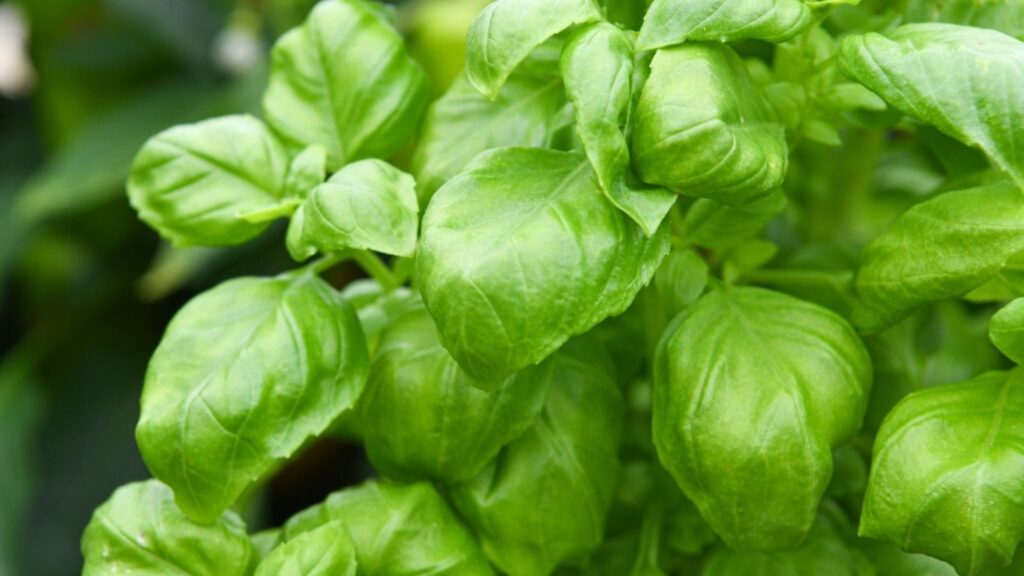
Basil has a bushy growth habit that can get quite tall, but if you prune it frequently and harvest, it won’t be a problem as a cantaloupe neighbor.
It has a shallow root system which should not compete with cantaloupe.
When in doubt, watermelon makes an excellent container plant when placed near a patch.
Beans
Close-up of a bean plant in the sunny garden. The bean plant is a creeper. The large, broadly oval leaves of
the plant are arranged alternately along the stems and are bright green in color.
Leaves are made up of several leaflets, usually three of which are attached to a central stem known as the petiole.
The fruit of a leguminous plant is an edible seed pod. The pods are long and thin, bright green in colour.
Beans benefit many plants as they fix nitrogen in the soil. Cantaloupe plants are heavy feeders and will greatly benefit from planting beans in their area.
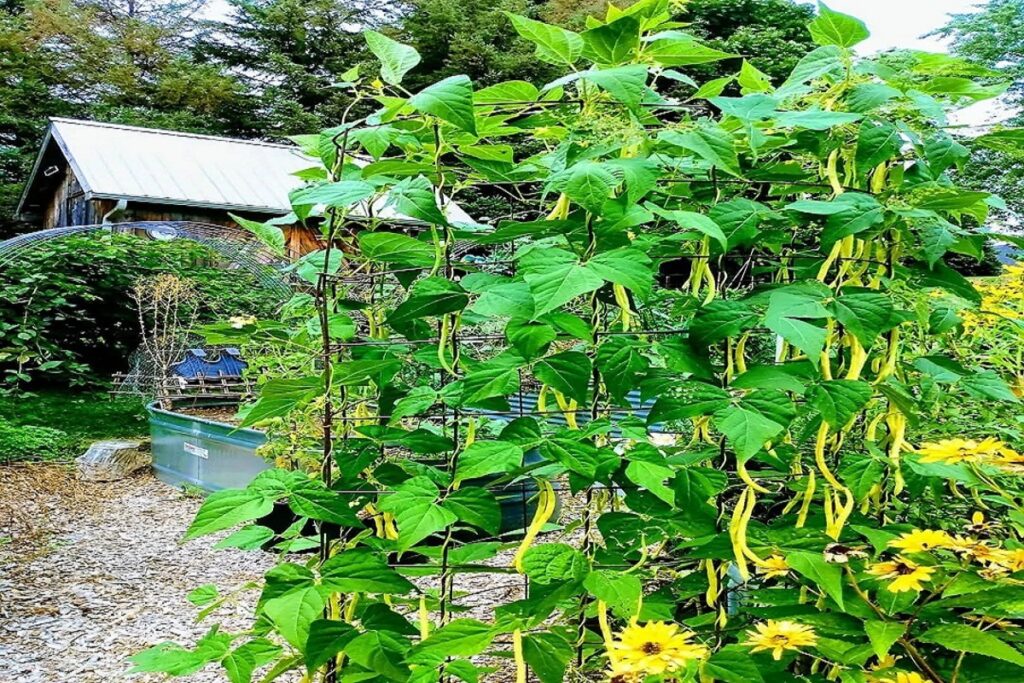
As the beans are alive, they absorb nitrogen from the air and fix it in their roots; Once the old bean plants die
and you cut them back to the ground, their roots decay into the soil and release all the nitrogen they stored for your cantaloupe plants.
Bush and pole bean varieties will both work. Try alternate rows of cantaloupes and beans.
in Use trellis or cattle fence panels for pole beans so they can’t be trained to grow as the cantaloupe will cover the soil.
When you cycle the bean plants through your cantaloupe patch, make sure you remove them to the ground level, leaving their roots behind to feed your crop!
Borage
Close-up of blooming borage plant in sunny garden. The plant has the structure of a bushy branch.
The stems are covered with fine hairs and purple in color. The broad leaves are coarse and short in texture, and densely covered with stiff hairs.
They are oval or heart shaped with jagged edges and a bright green color. Small star-shaped flowers of bright blue color.
When I’m discussing filling soil with plants, I should mention borage! As the borage decomposes,
it releases potassium and calcium into the soil and helps you grow more cantaloupes. You can cut and discard the borage to add more organic
matter while keeping these nutrients available for other plants Potassium is responsible for fruiting and flowering,
so plant scientists recommend low-nitrogen and high-potassium fertilizers when the plants are flowering. What to plant with
cantaloupe and If that’s not enough reason to plant borage, they also attract a lot of beneficial insects.
Your garden will have more pollinators and predators, which can lead to more fruit and fewer pests.

Cantaloupe vines will likely suffocate the borage if things get out of hand, so keep an eye on those vines! If you want to cycle nearby borage to make borage mulch for your plants,
plant them at the edge of your watermelon patch or in nearby containers and repot in season, cutting back and discarding older plants after they flower but before they set Seeds.
The Carrot
Close-up of a man’s hand holding a bunch of freshly picked carrots in the garden with a background of growing carrot trees.
Carrots have edible, bright orange taproot and a rosette of leaves. These leaves are deeply pinnate, divided into fern-like segments.
The leaves are green and luscious. Carrots are a great way to help loosen your soil.
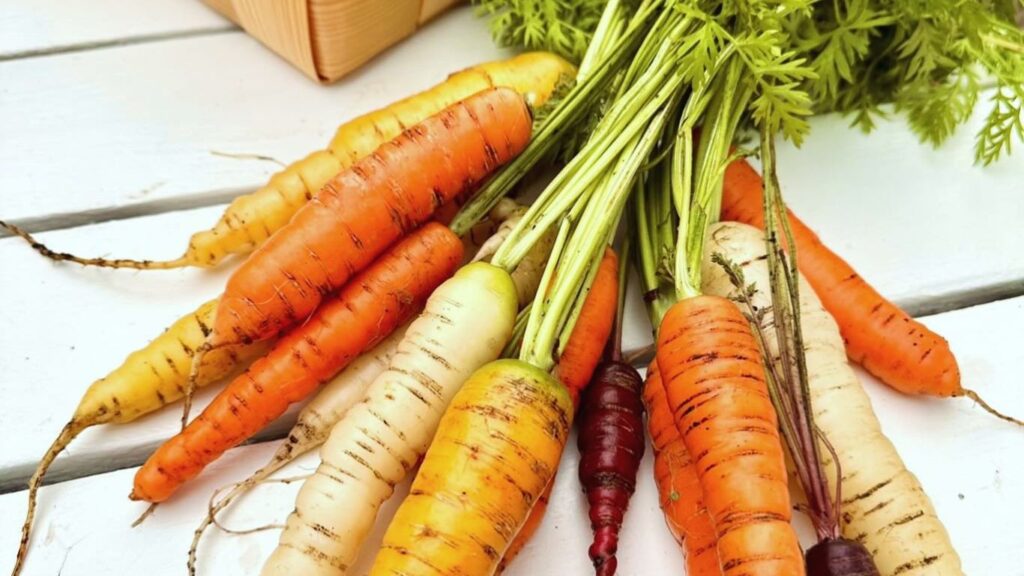
Grow this cool-season crop where you want your watermelon patch to break up the soil so that tender cantaloupe seedlings can find their footing.
You can eat carrots at any stage, so even if it’s time to plant cantaloupe seeds, you can leave some in the ground.
What to plant with cantaloupe in Pull the carrots once the seedling needs more space.
Cilantro
Close-up of growing cilantro in sunny garden. Cilantro is an annual plant with slender,
branched stems and delicate, finely divided leaves. Coriander leaves are flat and round, bright green in colour.
Although cilantro is a cool-season crop that usually doesn’t take heat, you can plant it near your cantaloupe in a container or in a shady spot to reap the benefits.
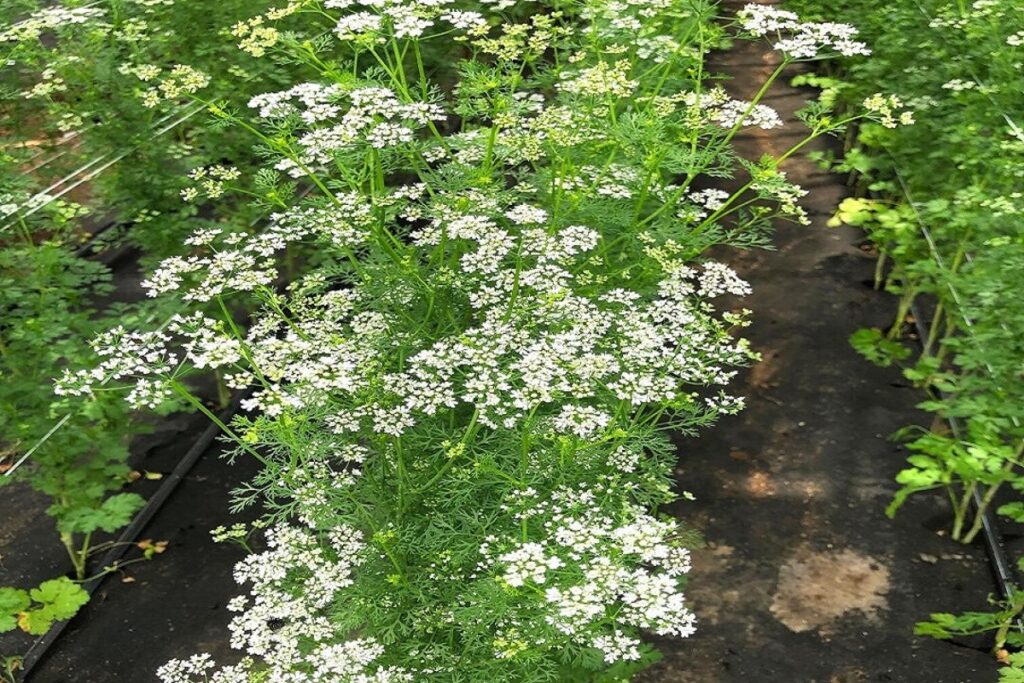
Cilantro will attract lots of beneficial insects to your garden. You will see many pollinators such as butterflies, hoverflies and bees and predators
such as ladybugs, lacewings and parasitic wasps. In addition to bringing in predators, cilantro can repel many unwanted bugs such as beetles, aphids and spider mites.
Corn
A close-up of corn plants growing in a sunny garden. Maize grows vertically, forming a strong, full stem that provides support for the plant.
The stem is crowned with large ribbon-like leaves that are arranged in an alternate pattern along the stem.
Maize leaves are long, broad, bright green. Maize produces bright yellow edible kernels that are tightly clustered in long clusters.
Native Americans used a gardening method called the Three Sisters to grow corn, beans and squash.
This method is still widely used today by gardeners and can be adapted to suit your needs.
The corn provides a natural trellis for the pole beans, and the squash acts as a living mulch to protect the corn’s roots.
You can swap squash for cantaloupe and grow them with corn and beans to make the most of your gardening space.
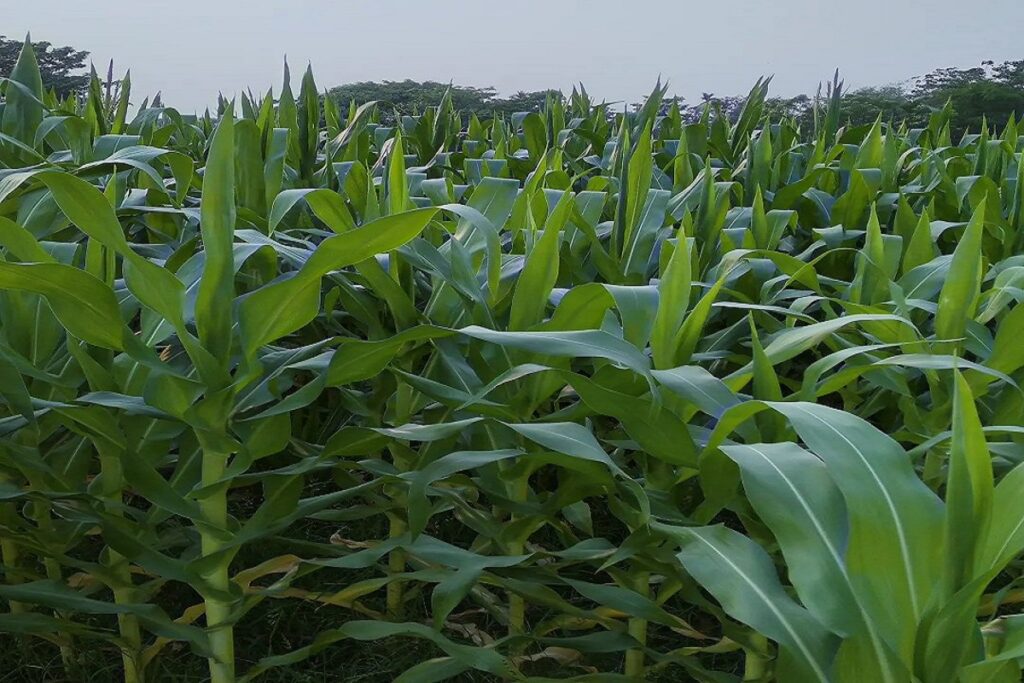
Cantaloupe plants require lots of sunlight. Even though the corn is tall, you can plan it so that it doesn’t cast too much shade on your watermelon.
The Three Sisters Method will help you figure out everything to prevent a shady wall of corn!
Deal
Close-up of dill growing in garden. Dill is a herbaceous annual plant with delicate, light green feathery, fern-like leaves.
Leaves are divided into many thread-like segments, giving them a thin appearance. The aroma and taste of dill is delicious, so I always recommend planting it in your garden!
But on a more neutral note, it’s a good plant to have around because it attracts ladybugs, which will eat the aphids that want to suck up whatever your cantaloupes have to offer.
Lettuce Close-up of growing lettuce in a sunny garden. It is a leafy green with a rosette form. Leaves form a loose head. Lettuce leaves are broad, bright green,
with a shiny and wrinkled texture. What to plant with cantaloupe in Lettuce is an easy, fast-growing plant that can accompany just about anything.
Plant the seeds at the same time as the watermelons and harvest the cantaloupe seedlings when they are a few inches tall and give the plant
the space it needs to grow naturally. Lettuce will act as a ground cover to help suppress weeds and you get the added bonus of extra greens!
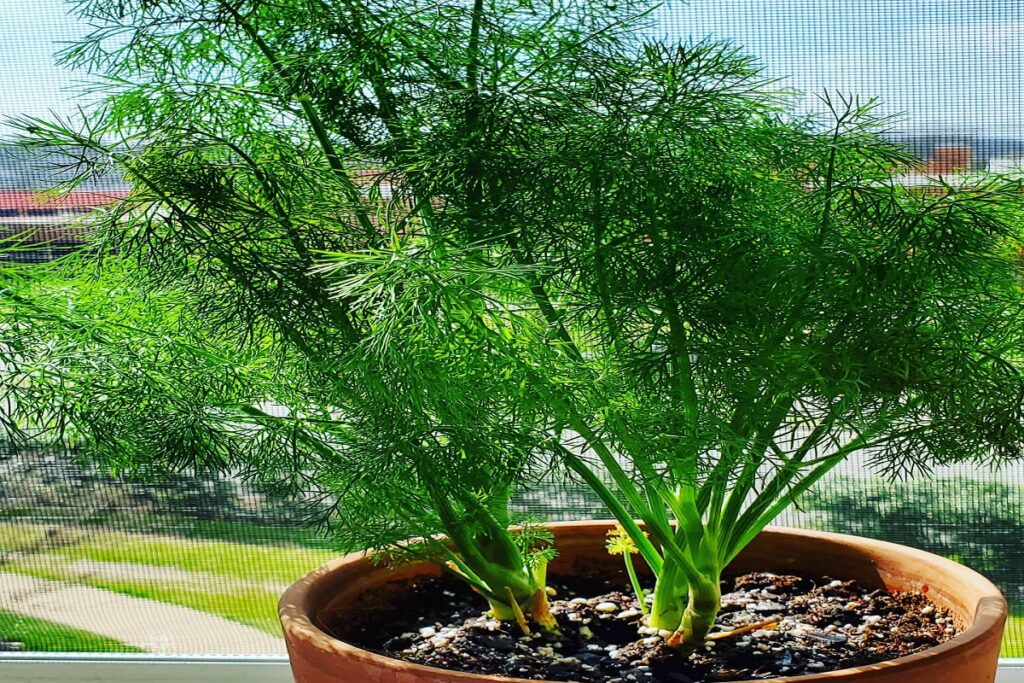
If you live in a hot climate, this method may not work well since lettuce is a cool-season crop, but water levels are good for both plants, and some shade from
the vines will help your lettuce hang on for a while. You can use other greens such as arugula and spinach.
Marigold
Close-up of blooming marigolds in garden. Marigold leaves are lanceolate and deeply lobed, dark green. The flower has a
distinct daisy-like appearance, with multiple layers of petals, bright orange-red and bright yellow colors. I like to have marigolds in my garden because they are colorful and useful.
You can deal with mosquitoes around your cantaloupe because they need so much water, but the marigolds will help repel them. They will also help control
nematode populations in the soil, which can stunt plant growth, and act as a trap crop for aphids to keep your melons away. I can see that the marigolds will grow as large as you allow.
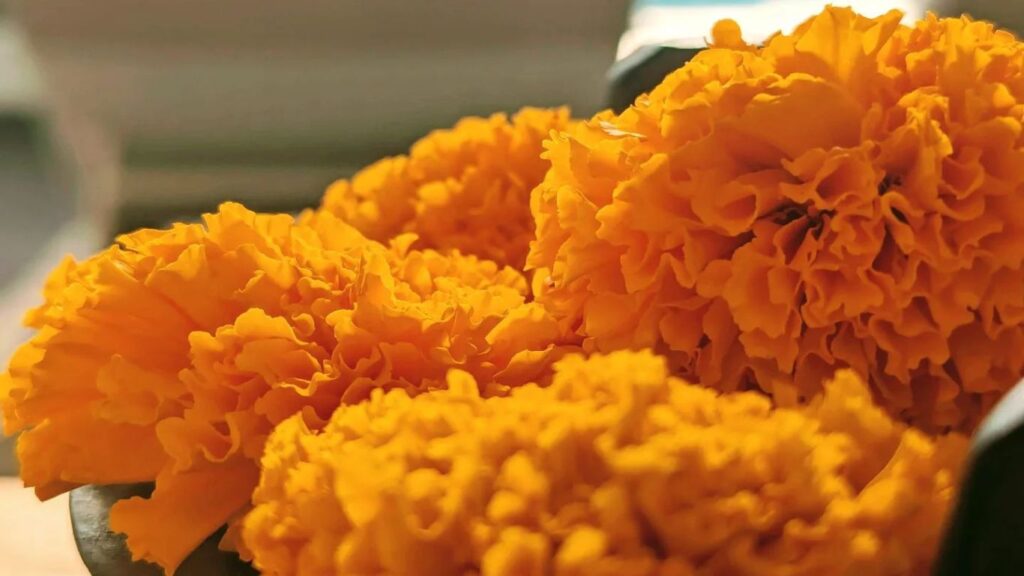
What to plant with cantaloupe and They can get fairly large when planted alone, but they are compact in shady areas near other plants.
If you plant them near your cantaloupe, they shouldn’t be so large that they obstruct your melon vines.
Mint
Close-up of mint growing in garden. Mint is a perennial herb that has a spreading habit; Mint leaves are oval with a slightly hairy texture and serrated edges.
They’re pale green. Keep mint separate in a pot because it has a vigorous growth habit, but it’s a good plant near your cantaloupe.
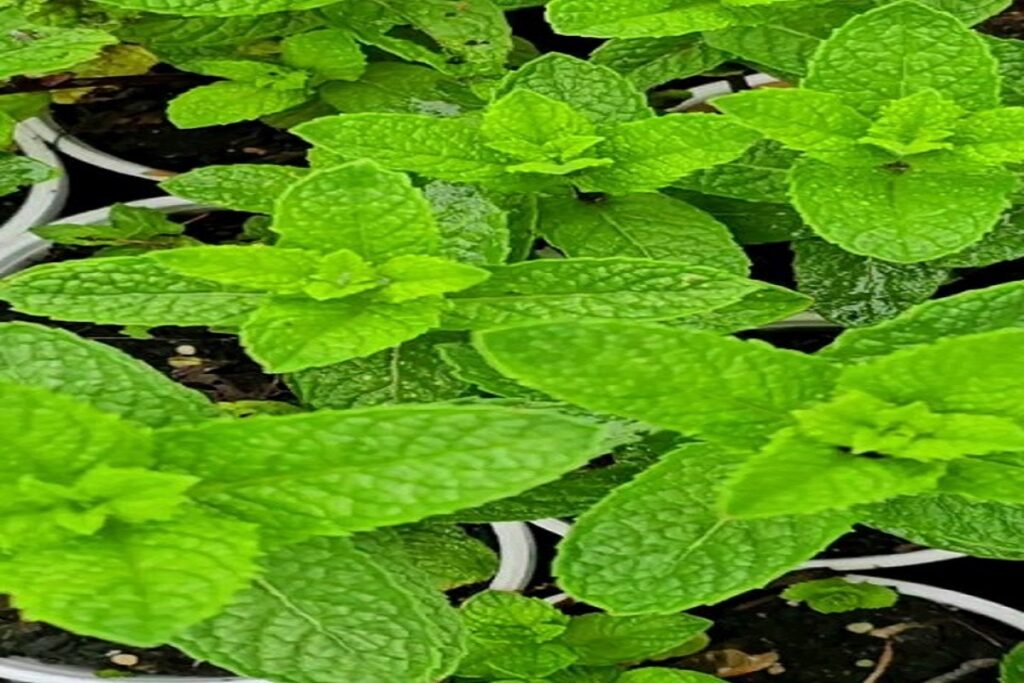
What to plant with cantaloupe in Mint will repel a variety of pests, including aphids, squash bugs, whiteflies, ants, and flea beetles. Find a mint that you enjoy
smelling and place it around your cantaloupe patch for maximum benefits. Some say that mint can improve soil quality due to the nutrients it releases into the soil,
in but its rapid growth rate doesn’t make it worth a shot, in my opinion! The delightful minty smell in
my garden quickly turned into a year-long battle trying to remove it. Put mint on the ground on your own responsibility!
Nasturtium
What to plant with cantaloupe in Close-up of a flowering nostrum plant in a sunny garden Nasturtium is a popular annual plant known for its showy flowers and edible leaves.
The plant has rounded, slightly corymbose leaves that grow on tall erect stems. Nasturtium flowers are cylindrical in shape and bright orange-red.
If you have aphid problems on your cantaloupe, plant nasturtiums. Nasturtium is an effective (and beautiful) way to quickly eliminate aphids.
Aphids are attracted to flowers and accumulate there. Flowers also attract hoverflies, which feed on aphids. When the hoverflies are drawn in, they will stick around for an aphid buffet!
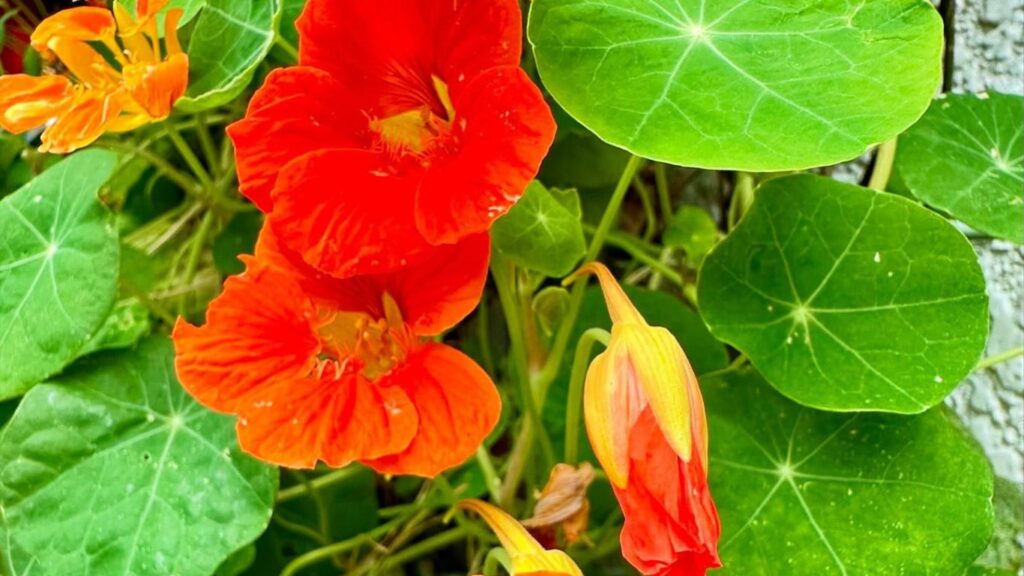
Nasturtium has a rounded bushy growth habit that will look fantastic at the edge of rows or in the corner of a bed.
It doesn’t need more than a foot or two of space to spread, so you can easily intercrop with watermelon as long as you prevent the vines from wrapping around the plants.
Onion
Close-up of onions growing in garden. The plant has long thin leaves that grow from the base of the plant in a rosette shape.
Leaves green and hollow. The plant produces edible spherical or oval bulbs that grow underground. The bulbs are covered with orange peel in many layers.
Like garlic, onions also have strong resistance against many pests like beetles, aphids and caterpillars.
Onions are larger than garlic, so you have to remember that they don’t interfere with the watermelon roots.
The vines will help protect the onion bulbs, so you can plant the onion close to
the cantaloupe so the vines will surround it. But don’t plant so close that roots will compete for space and nutrients.
Cantaloupe needs a lot of sunlight and onions don’t grow enough leaves to provide much shade, so it’s a good plant to grow close by.
What to plant with cantaloupe on If you’re concerned about spacing, you can always opt for containers across the garden.
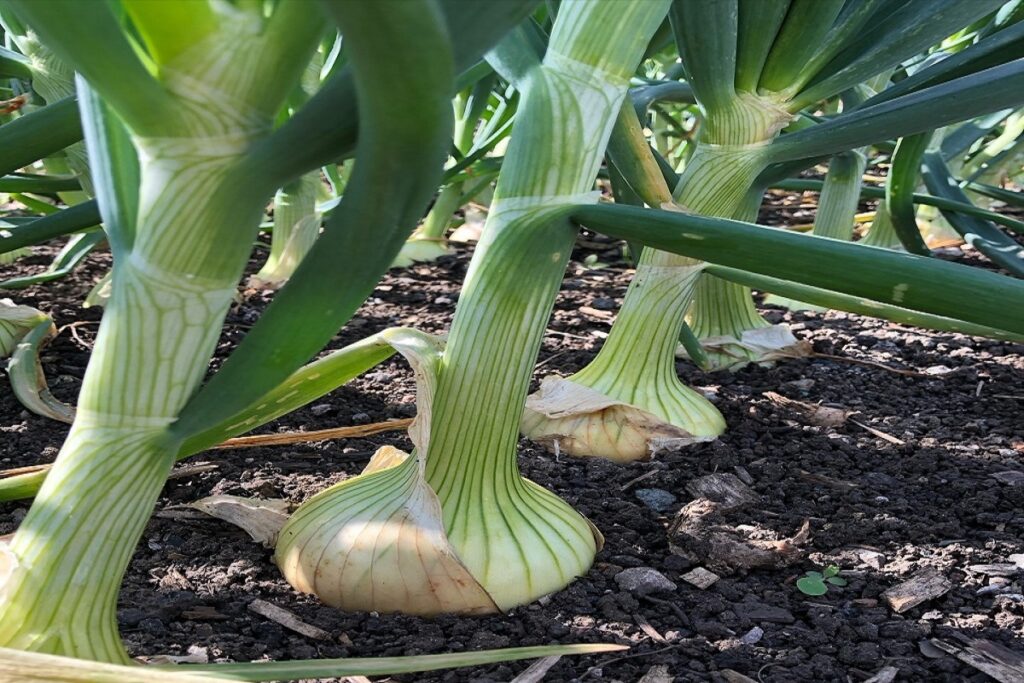
Dill bushes grow but stay compact, so they won’t interfere with your watermelon. This would work well in the corner of your watermelon patch or in a container.
You can also spread the vines around the dill plants. Just make sure there’s enough room so it doesn’t get suffocated.
Garlic
Close-up of garlic growing in garden. The plant has long slender leaves that grow in a rosette shape. What to plant with cantaloupe in Leaves are dark green,
flat and have a smooth structure. Garlic is a great neighbor to help you fight pests, so if the critters are always after your cantaloupe, add it to the collection.
Many insects hate its pungent scent, so pop a few near your watermelon to help keep them away.
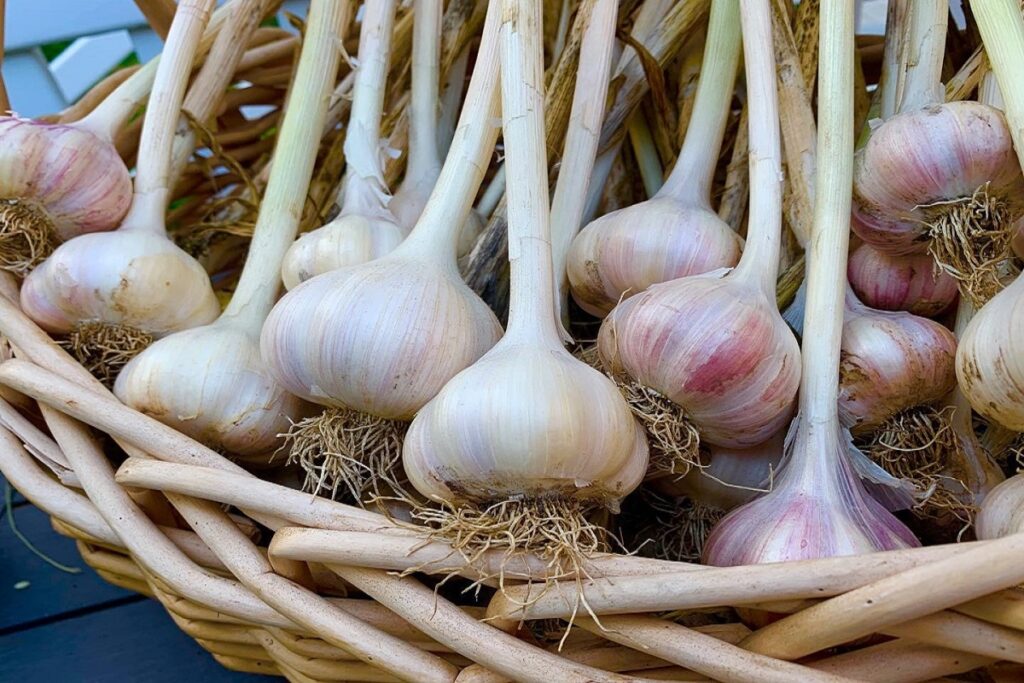
Unless you have elephant garlic, the bulbs should not get in the way of the cantaloupe roots.
You can plant them very close if necessary. You can still benefit from garlic’s resistance if you keep it in borders or containers.
Oregano
What to plant with cantaloupe in Close-up of an oregano growing in a sunny garden The plant has short, dark green, oval leaves with a slightly hairy texture.
They grow against each other along the stem. Oregano can reach two feet tall and 18 inches wide if left to its own devices, but if you love oregano and harvest it daily,
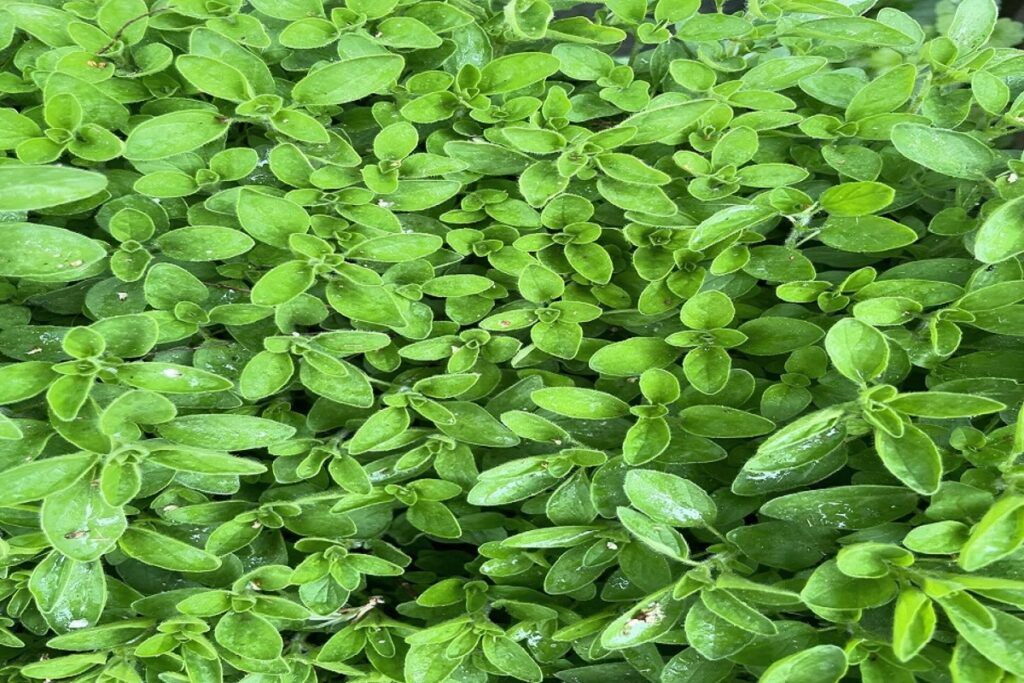
growing it next to watermelon should be no problem. You should grow oregano in a container or away from the cantaloupe roots because it prefers dry soil.
Oregano is a good herb to grow near melons because they repel common pests while attracting the predators and pollinators you need to your garden.
Lettuce
Lettuce is a vegetable, which is famous for providing the base of salads. There are many different types of lettuce, and they all share the scientific name Lactuca sativa.
Lettuce’s health benefits primarily come from its vitamin content. Leaf lettuce doesn’t form a head, and instead is attached to a stem. Some of these lettuces
have dark or reddish leaves. Health benefits The health benefits of lettuce vary based on the nutritional content of the different types of lettuce.
Bone strength Lettuce is a source of vitamin K, which helps in strengthening bones. Getting enough vitamin K can also reduce your risk of breaking bones.
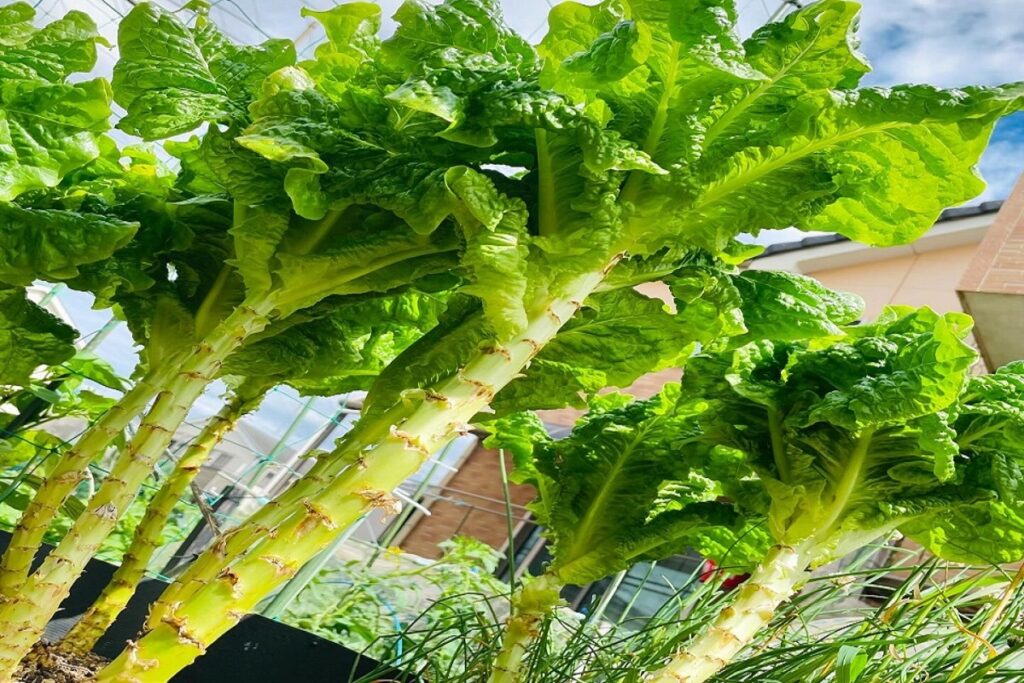
Hydration Raw lettuce makes up more than 95% water. As a result, the body is hydrated by eating lettuce. improved eyesight Lettuce is a source of vitamin A, which contributes to eye health.
Vitamin A may reduce a person’s risk of cataracts. Extracts from multiple lettuce types have also been shown to improve sleep.
Nutrition The nutritional content of lettuce varies among different varieties
Radish
What to plant with cantaloupe in Close-up of radish plant growing in garden. The plant is composed of a rosette of basal leaves and a central taproot that blooms to form
an edible radish bulb with bright dark pink skin. The leaves are located basally, directly exiting from the root. The leaves are oval, dark green, with a serrated edge.
If your garden is anything like mine, you’re going to need all the anti-aphid recommendations you can get! Radishes are another great trap crop that you can grow
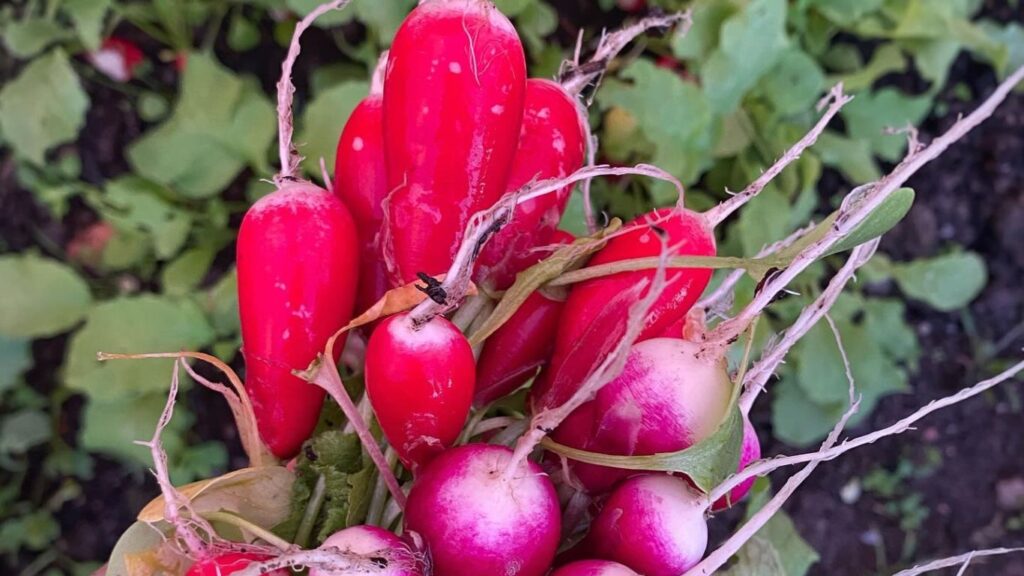
next to your cucurbit vine for most of the growing season. Ladybugs and lacewings are attracted to radishes and feast on aphids, which love them. If you plant radishes and watermelon seeds at the same time,
you’ll be able to harvest radishes before the cantaloupe needs the extra space. Once the large leaves of the watermelon cast shade, you can grow radishes under
those leaves to give them some shade in hot weather. Succession planting allows you to prevent aphids and enjoy radishes for most of the warm season.
Tansy
A close-up of a flowering tansy plant (Tanacetum vulgare) in the garden. What to plant with cantaloupe and The plant has small, button-like, clusters of bright yellow flowers.
Each flower is made up of many tiny petals tightly packed together to form a round or dome shape. The stems are stout and erect, covered with alternate,
deeply lobed or pinnately divided leaves. Tansy works wonders for attracting pollinators. You will see many bees, hummingbirds and butterflies flying around
the bright yellow clusters of the flowers. Although beautiful and useful, this is a plant you’ll want to plant in another bed rather than next to your watermelon.
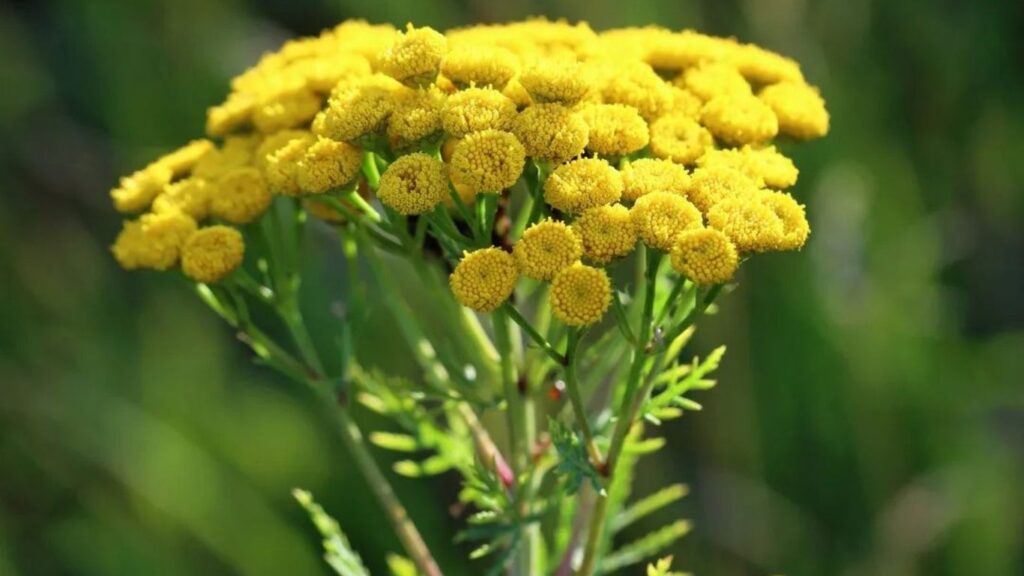
It can grow up to five feet tall and casts a lot of shade, and it regenerates itself easily and can become a noxious weed if left unattended.
The vigorous growth of tansy and cantaloupe will result in a competitive battle for space and I’m not too sure which will win!
Wild Flower
Close-up of a field with wildflowers in bloom against a blue sky. What to plant with cantaloupe and The garden features white daisies, blue cornflowers, pink cosmos and
blanket flowers. This is a huge category, but wildflowers native to your area are so beneficial that I can’t help but mention them! If you need help attracting pollinators to your watermelon patch,
find out which wild flowers are endemic to your area. Native flowers will help support native pollinator populations, which will help your garden.
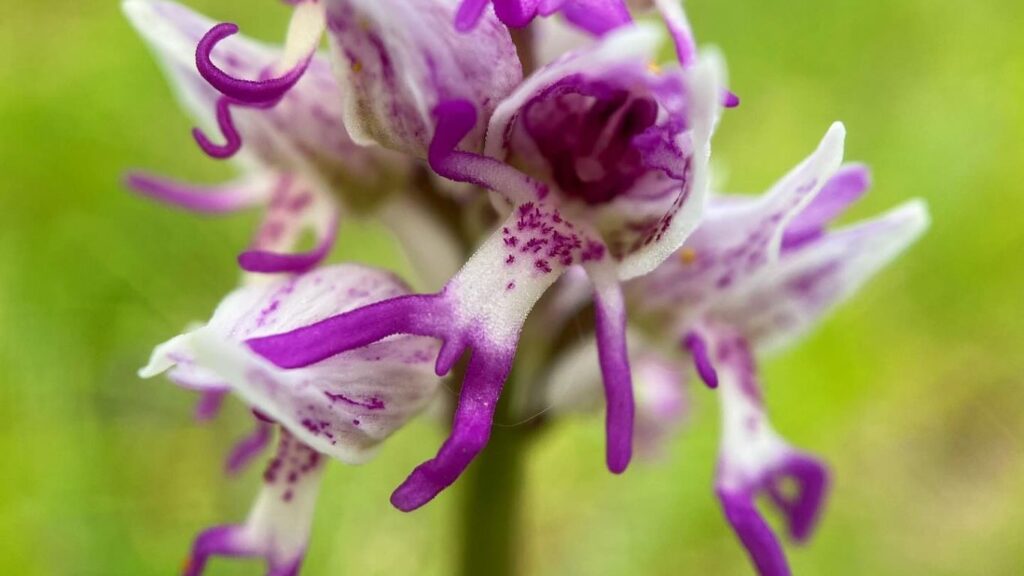
When planting flowers near cantaloupe, place the smaller ones closer to the melon plants and the taller ones farther away so they don’t cast too much shade.
Place them at the end of a row or in a corner, or put them in containers where you can move around as needed
Cucumber
What to plant with cantaloupe on Unfortunately, cucumbers are a prime dinner for cucumber bugs, so planting them near any other crop susceptible to
the same insect is like putting a menu board out front that says, “Here’s a free meal!”
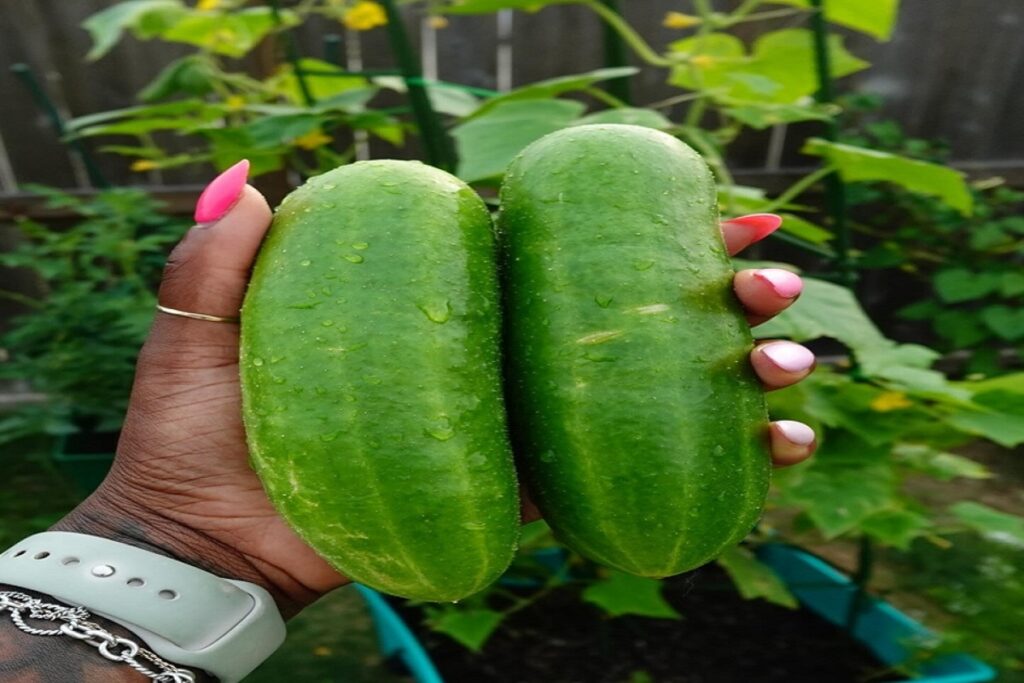
Both of these plants are sunlight addicts, so they don’t really want to be planted near each other in the garden.
Either one tree will be too healthy and the other will be suffocated, or they will both be stunted.
Squash + Pumpkin
Like cucumbers and watermelons, squash and pumpkins are members of the Cucurbitaceae family and are also a prime host for cucumber beetles and squash bugs.
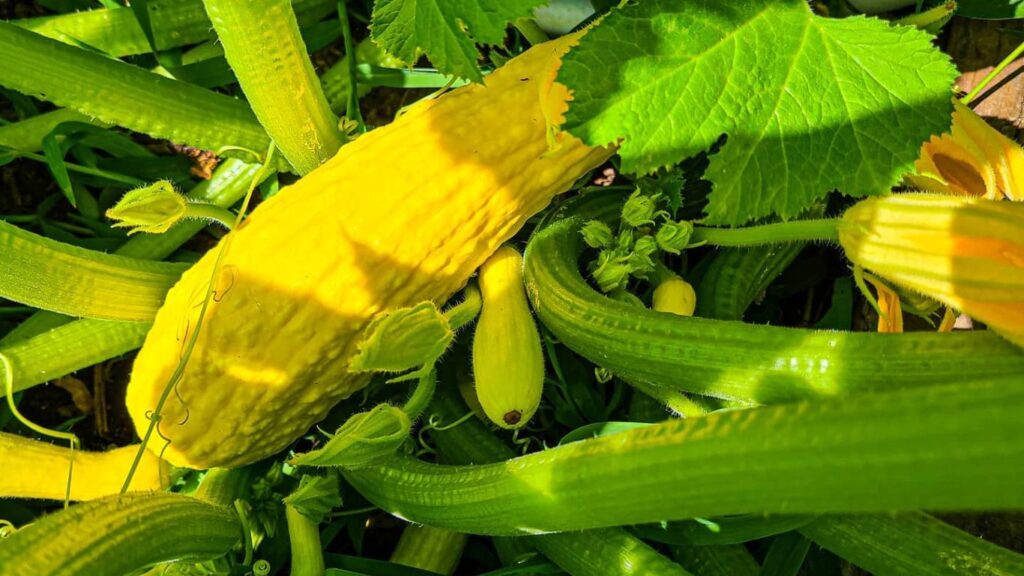
What to plant with cantaloupe In addition, cantaloupe and squash vines are likely to spread out in search of uninterrupted sunlight and will quickly outgrow nearby plants.
Squash is a family of plants that comes in many different varieties. Winter varieties include butternut, acorn, delicata, pumpkin, hubbard, kabocha, and spaghetti squash.
Zucchini and yellow squash ,with either straight or curved necks, are considered summer squash.
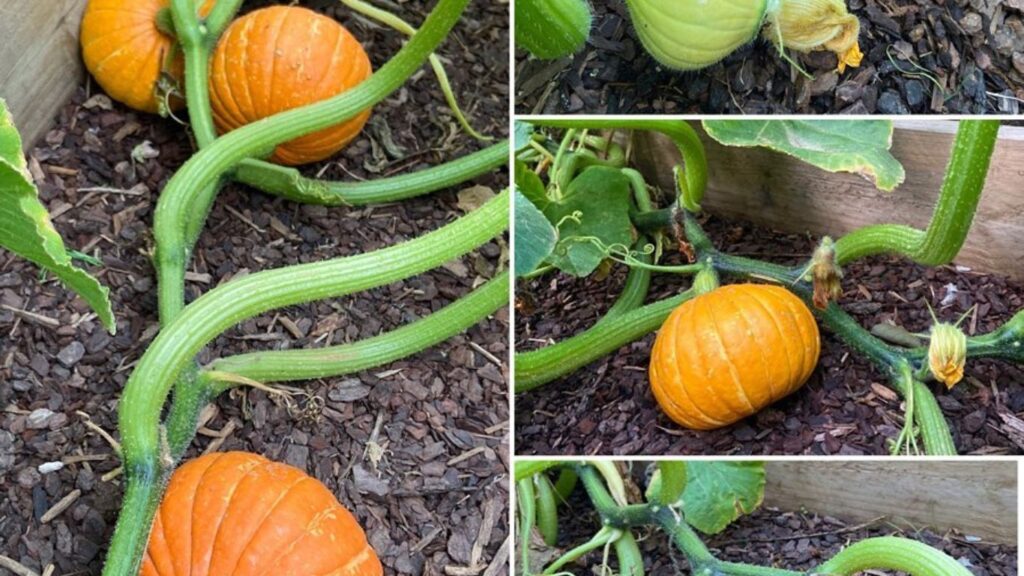
However, squash can be confusing to classify as different fruits of plants (genus Cucurbita) in the gourd family widely cultivated as vegetables. Also: A plant and especially
a vine that bears squash Compare with summer squash and winter squash. Anyway we can easily grow the mentioned squashes with our cantaloupe plant of different types of squash.
Bee Balm
Bee Balm is a beautiful, brightly colored flower that also helps attract beneficial pollinators such as bees and butterflies to your garden.
What to plant with cantaloupe in Not only do they help pollinate, but these cute creatures can also act as natural insect predators!
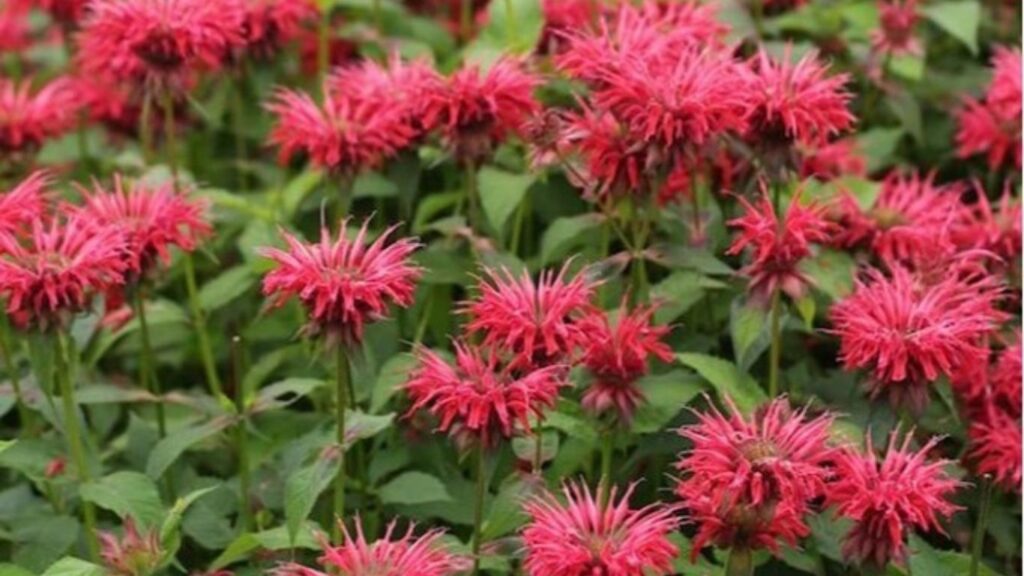
Bee balm planted near cantaloupe will not only look great, but will also provide some protection from insects.
What to Plant With Cantaloupe Last Thought
You don’t need to separate cantaloupe plants to give them enough space. There are lots of plants that you can add to them that will help them
grow better! Choose plants that don’t shade too much and like water; You will have a happy neighbor of the plants in no time.
Reference:
